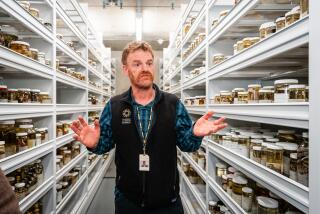Sweet Snake Oil
In ancient times, Greek doctors had medicines called theriake (from therion, a word for snake), which supposedly cured snakebite. Human poisoners were also a problem, particularly in the courts, so a 1st century BC ruler named Mithradates VI combined a lot of theriacs--mostly herbs and spices--hoping to protect himself against poisoning. For good reason: He was a much-hated tyrant.
About 150 years later, Andromachus, the emperor NeroŌĆÖs physician, used a formula of 64 ingredients. He also came up with the idea of including the flesh of a poisonous snake in the recipe, and after that you could scarcely sell theriac unless it had a little snake meat in it. Other secret ingredients might be wax, roasted copper and hyena fat.
During the Middle Ages, theriacs started being prescribed against diseases as well as poisons, so they became important to ordinary citizens, particularly during plagues. In 17th century Italy, the compounding of theriac by a guild known as the triacantii was a civic festival; the ingredients were displayed in public for three days before the solemn open-air ritual. But English doctors started doubting this ancient family of quack cures, and after 1788 they no longer officially recognized theriac as a medicine.
Meanwhile, pharmacists were known to revive dried-out medicines by adding honey or sweet wine or, later, with the growth of the sugar trade, molasses. So by 1720, unscrupulous English merchants were selling people plain molasses under the more common English form of the word theriac, treacle. And thatŌĆÖs why the English call their variety of molasses ŌĆ£treacle.ŌĆØ
Of course, this sort of treacle wasnŌĆÖt the genuine medicinal theriac. On the other hand, the real thing didnŌĆÖt work anyway and tasted a lot worse.
More to Read
Sign up for Essential California
The most important California stories and recommendations in your inbox every morning.
You may occasionally receive promotional content from the Los Angeles Times.








